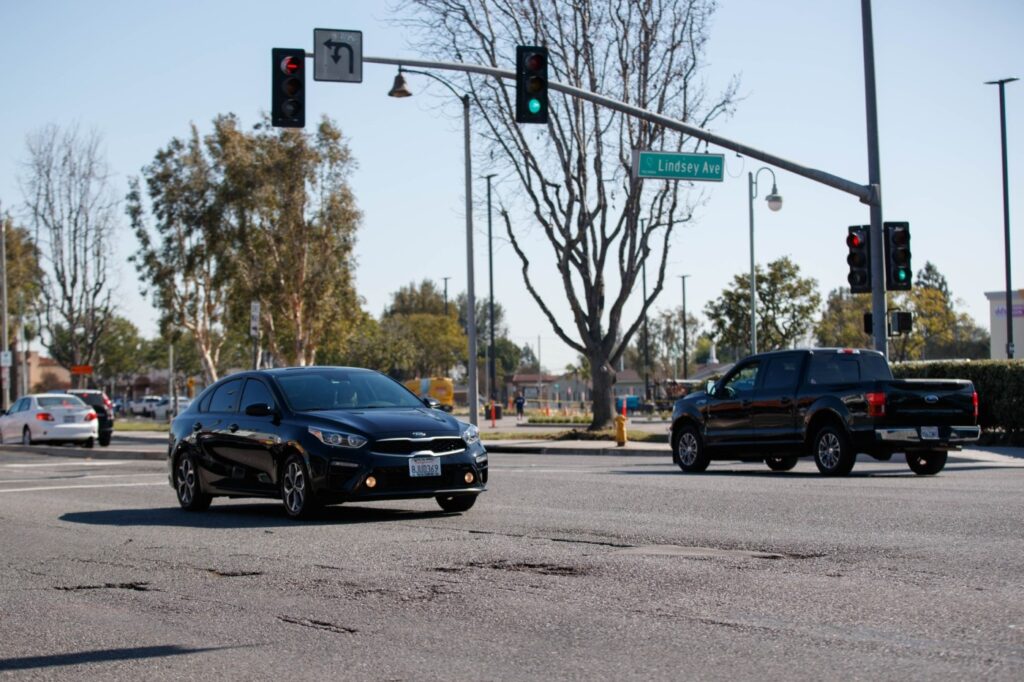
The massive rise in gas prices is another harsh reminder that Californians pay the highest gas taxes in the nation. But it’s also a reminder that the state’s roads and bridges don’t always perform or look like they’re some of the most expensive in the country.
In addition to the 18.4 cents a gallon federal fuel tax, California’s drivers pay 51.1 cents per gallon in state gas taxes, plus state and local sales taxes. And, unfortunately, those high taxes are not translating into smoother, less congested roads across Southern California and the rest of the state.
Reason Foundation’s Annual Highway Report shows California spent $206,924 per state-controlled mile of highway in 2019. The good news, at least relative to some other states: California now spends far less per mile than New Jersey, New York, Massachusetts, and Florida, among others. However, California’s per-mile spending is three times higher than that of Texas, which spends $75,153 per mile.
California ranks 45th out of 50 states in overall highway performance and cost-effectiveness, while Texas ranks 16th overall. And California’s ranking has worsened from 43rd overall in previous editions of the report. Part of the reason for the slide—California does not rank higher than average (25th) in any of the Annual Highway Report’s 13 categories. Put simply, when it comes to highways and bridges, the state does many things poorly and nothing particularly well.
For example, California ranks next to last, 49th, in urban arterial pavement condition, 44th in urban Interstate pavement condition, and 40th in rural Interstate pavement condition. By comparison, 8.08% of the pavement on California’s urban Interstates is in poor condition while just 3.43% of urban Interstate pavement in Texas is in poor condition—and Texas’ highway system is the largest in the country, with nearly four times the lane miles of California’s state-controlled highway system.
In safety and performance categories, California ranks 25th in overall fatality rate and 25th in structurally deficient bridges, with 6.97% of the state’s bridges deemed structurally deficient in 2020. In neighboring Nevada, just 1.28% of bridges were deficient and only 1.33% of Texas’ bridges were structurally deficient.
“California will receive $849.4 million this fiscal year – more than double the amount of any other state – and an estimated total of $4.2 billion over five years, to address highway bridge needs. Caltrans and local transportation agencies will target the funds to improve the nearly 1,500 bridges rated in ‘poor’ condition in the state,” Caltrans announced in January.
With that influx of taxpayer money, there’s no reason the state shouldn’t be able to show a massive reduction in its percentage of structurally deficient bridges in the years to come. California must make sure that the federal bridge money it receives is properly spent and produces tangible improvements.
Even though much of Southern California and the rest of the state were locked down in 2020 during the COVID-19 pandemic, California still ranked 43rd in traffic congestion, with the state’s drivers wasting 14.75 hours a year stuck in traffic.
Related Articles
LAPD blasted for detonating a neighborhood
NIMBYs use CEQA to harm students
Newsom paints rosy picture, ignores big issues
Freedom is our strength. Let’s extend it by offering refuge to oppressed people.
Don’t let OC become another LA with Gascón-like policies: Todd Spitzer
Going forward, while it may be especially challenging for California to dramatically reduce the costs of its highway and bridge projects, at least in the short-term amidst record-setting gas prices and inflation, the state could reduce its percentage of deficient bridges, lower its fatality rate, and improve its pavement quality to the national average. And if it does, California would move up in the Annual Highway Report’s overall performance and cost-effectiveness rankings substantially.
Unfortunately, as things currently stand, California has the worst of all worlds: high gas taxes and high state highway spending that produces bumpy, congested roadways and deficient bridges that are in need of repairs and modernization. As Californians pay record-setting prices at the pump, state lawmakers should make sure those state and local taxes are being put back into the roads to improve them.
Baruch Feigenbaum is senior managing director of transportation policy at Reason Foundation and lead author of the Annual Highway Report.
